This article covers the following learning outcome: identify the main hazards of, and suitable controls for, marine transport and establish safe working on the ships over water and under water.
- Hazards of vessels and working over water
- Introduction
- Exclusion zone
- Vessel hazards
- Types of vessels and activities associated with the oil and gas industry
- Single buoy mooring
- Loading and unloading of vessels at marine terminals
- Transfer of material between marine vessels and tanks
- Control of marine operations, certification of vessels, inspection and approvals
- Certification of vessels
- Roles and responsibilities of marine co-ordinators, masters and crew
- Roles and responsibilities of masters and crew
- Roles and responsibilities of marine co-ordinator
- Personnel transfers and boarding arrangements
- Gangway boarding
- Other types of personnel transfer
- Personal protective equipment suitability
- Personal Protective Equipment (PPE) – specific requirements for marine use
- Personal Protective Equipment (PPE) – training
- Diver operations
- Diving project plan
- Diving contractor’s responsibilities
- Diving project – further control measures
- Questions and answers
Hazards of vessels and working over water
Introduction
The part that shipping plays in the transportation of hydrocarbons around the world, on behalf of the oil and gas industry, is substantial. Shipping also plays an essential part in providing necessary support and services to offshore installations. Consequently, marine activities present many unique risks and hazards which require special consideration in order to control them.
Apart from those risks and hazards associated with dealing with hydrocarbons in a marine environment, unassociated activities by vessels not connected with the oil and gas industry also present a serious risk to offshore installations. These include potential collisions with installations or support vessels, or anchors being dragged over well heads or subsea pipelines, to name just two.
Also, many offshore installations are located in or near busy shipping lanes, which exacerbates the problem of ships straying into the exclusion zone surrounding each of these installations.
As dangerous as passing vessels are, the majority of collisions with offshore installations involve attendant vessels. Attendant vessels cause around ten times more severe damage collisions than passing vessels and this can result in catastrophic losses. Let’s take a look at case study, involving an attendant vessel and an offshore installation.
Mumbai High North Disaster 2005 – in 2005 the support vessel, MSV Samudra Suraksha, was in the process of transferring an injured worker to the Mumbai High North rig for medical attention when strong sea swells caused the vessel’s helideck to strike and sever one of the gas export risers. The escaping gas soon ignited and quickly developed into a fire which engulfed the whole installation. Twenty-two crew members were lost in the incident and the rig was completely destroyed by fire after two hours, with only the stumps of the jacket being left visible.
In order to minimize the risks associated with attendant vessels colliding with installations, support vessels should generally work on the lee side (downwind) of the installation. If support vessels have to work with the rig on a side other than the lee side, a full risk assessment should always be conducted prior to the work commencing.
Exclusion zone
The immediate area around an installation is regarded as a major risk area, with potentially severe consequences for any incident that happens within it. Consequently, it is designated as an exclusion zone with restrictions on which vessels are allowed to enter the zone.
The zone extends for 500 metres around the installation and is constantly radar monitored, as well as being patrolled by the platform’s Standby Vessel (SBV) or its emergency response and rescue vessel, either of which is in close communication with the platform’s Central Control Room (CCR). Any vessel wishing to enter the exclusion zone must seek permission from the central control room and the patrol vessel before doing so. If a vessel tries to enter the zone without permission, it will be warned off by the patrol vessel.
There are several types of vessel which are usually permitted to enter the exclusion zone. They are:
- Supply vessels.
- Mobile Offshore Drilling Units (MODUs).
- Dive Support Vessels (DSVs).
- Coastguard vessels.
- Trinity House survey vessels.
Vessel hazards
Let’s now look at some of the other hazards associated with vessels. These include:
- Breakdown, loss of power or loss of steering. This can lead to drifting, collision, running aground, etc.
- Anchoring over pipelines, wells and submerged cables. This can lead to damage or rupture of pipelines, wells or cables.
- Explosion during loading/unloading operations.
- Pollution – spillage, leakage, etc.
- Striking the installation (e. g. by a platform supply vessel in adverse weather).
- Man Overboard (MOB). The personal hazards associated with someone who falls into the water include:
- drowning;
- hypothermia;
- being struck by debris or vessel;
- becoming entrapped by debris.
Types of vessels and activities associated with the oil and gas industry
We are now going to look at the different activities associated with the oil and gas industry and the different vessels used to undertake those activities.
Types of vessels – platform support vessel
The Platform Support Vessel (PSV) acts as a shuttle between the offshore platform and the mainland, bringing all the goods, materials and spare parts required to keep the platform operational. It also takes back to the mainland any waste material and equipment in need of repair.
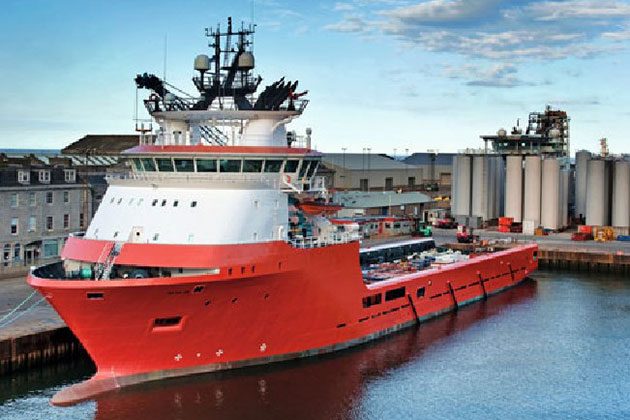
Source: Dreamstime
The PSV has to work in close proximity to the platform in order to unload and load its cargo. Hazards include:
- Collision between the platform support vessel and platform;
- Lifting hazards from crane operations. This includes shock loading, which is where craning operations are overtaken by the swell of the sea lifting the PSV;
- Dropped objects from the platform onto the PSV.
Types of vessels – floating assets
If the results from any test well drilling operations show that there is not enough hydrocarbon reserve to justify building a fixed production platform, then positioning a Floating Production, Storage and Offloading (FPSO) unit over the well head may be an alternative option.
An FPSO unit is a vessel used for processing and storing oil and gas extracted from the well head. This is then offloaded at regular intervals to tankers for transportation to onshore terminals/refineries.
Figure 2 shows an FPSO on station with its production and service connections.
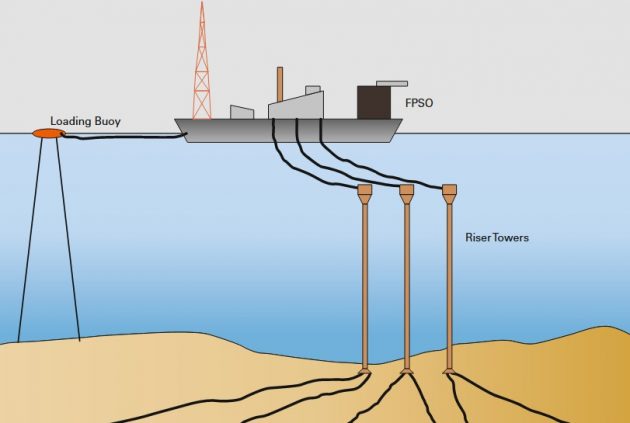
Source: Wise Global Training
FPSOs can be converted oil tankers, or can be vessels specially built for the purpose. In recent years, purpose built FPSOs specifically designed to store Liquefied Natural Gas (LNG) have come into use. They have a liquefaction facility on board which converts the gas (methane) into a liquid. It does this by reducing the temperature of the gas to -165 °C. In its liquid form, methane takes up 1/600th of the space it does when it is in a gaseous form.
Offloading operations
The transfer of hydrocarbon product from the floating production, storage and offloading unit to the tanker is a Common Hazards and Risk Assessment in Oil and Gas Industryhazardous operation, with the main risk being that the two vessels may come together as the tanker manoeuvres into position.
In order to reduce this risk of collision, Yokohama fenders, like the one shown in Figure 3, are placed between the two vessels so they do not make contact with each other.
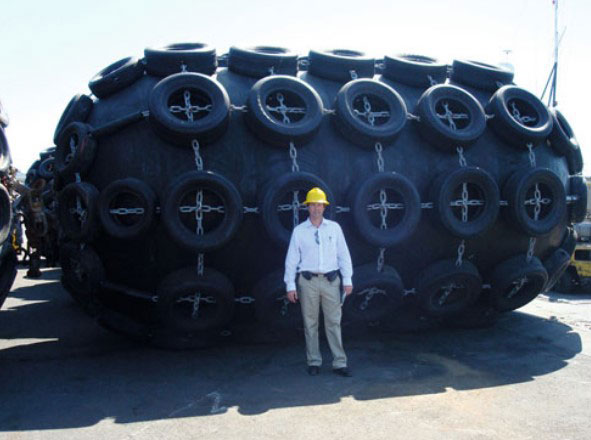
Source: Blue Ocean Tackle Inc
Single buoy mooring
There are many remotely situated sea-based well heads throughout the world which only have a buoy connected to them. These are known as Single Buoy Moorings (SBM) or Single Point Moorings (SPM). These buoys (Figure 4) act as a mooring point for tankers and have within them a product transfer system which facilitates the transfer of hydrocarbon product to the tanker.
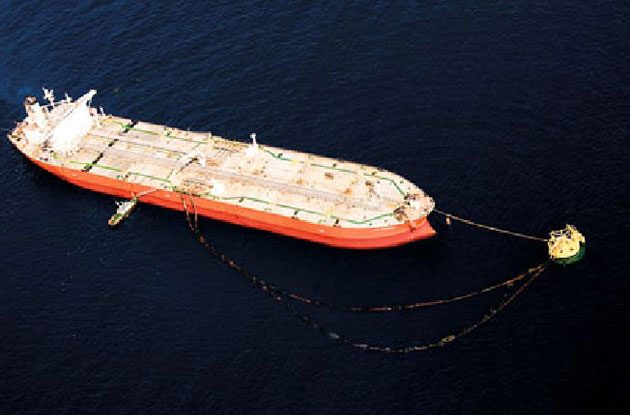
Source: Leighton Offshore
The main hazard associated with this operation is the potential for the tanker and buoy to come together. The main control for this hazard is to have a support vessel secured to the stern of the tanker to hold the tanker off the buoy.
Loading and unloading of vessels at marine terminals
Transfer of material between marine vessels and tanks
When a vessel arrives at a port for loading operations it will usually be navigated to its berth by a port pilot who will have the local knowledge and experience of the harbour waters to make this final leg of the journey safely. The manoeuvre may require the assistance of tug boats but many ships now have bow thrusters to make the final positioning adjustments themselves.
Once the vessel is safely moored it will be rigged with “fire wires”. These are two wire ropes, one fitted fore and one aft on the outboard side of the vessel. This is to provide an immediate hook up for a tug if it needs to tow the vessel away from its berth in the case of an emergency, such as a fire.
Before loading operations commence, a loading plan is formulated which specifies:
- How much cargo is to be loaded;
- The de-ballasting plan;
- The names of key personnel involved in loading operations;
- Emergency shutdown, spill procedures and watch arrangements.
Thereafter, fire-fighting equipment is put in place; openings on a ship’s deck which allow water to drain away, known as scuppers, are plugged to prevent any accidental spillage of cargo running over the side; an emergency shutdown device is positioned at a convenient location, usually at the manifold, so that an emergency shutdown can be activated quickly should something go wrong.
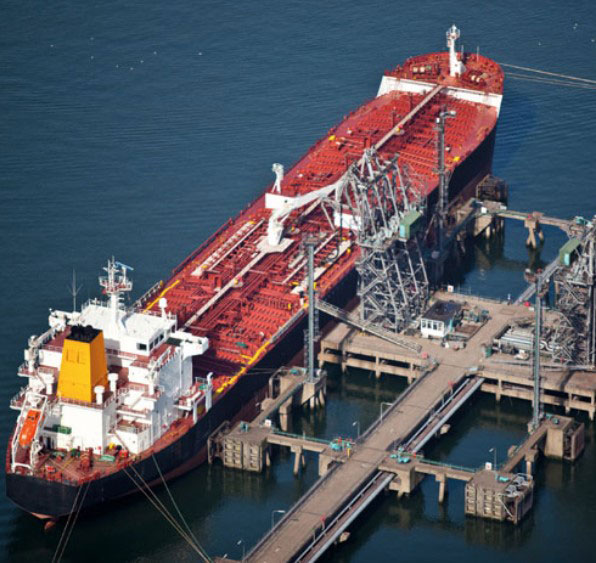
Source: iStock
Loading will commence once agreed by the terminal and the vessel. The maximum loading rate and back pressure will be set and good communications will be established and maintained between the terminal and the vessel at all times.
Loading starts at a reduced rate to reduce the generation of static electricity. The ullage in the first tank to be filled is monitored to ensure filling rates conform to the loading plan. Close watch is kept on the manifold back pressure until the agreed maximum loading rate agreed is reached. Close watch is also kept for any leaks, especially at the beginning of the loading operation.
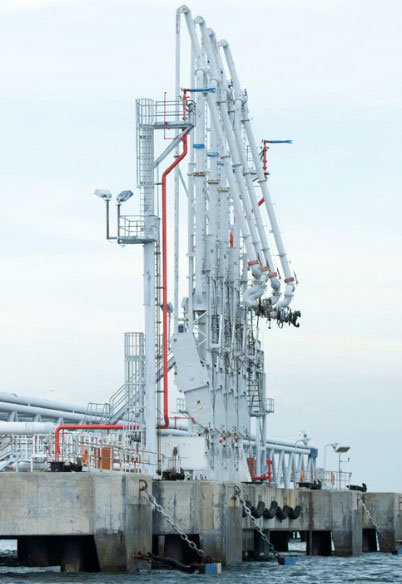
Source: Dreamstime
During loading operations, ballast will be discharged to compensate for the oil being filled into the tanks. This is a very important issue as a lack of ballast compensation can lead to excessive internal stresses being applied to the ship’s hull with potential catastrophic consequences. See the Widdy Island disaster case study:
Widdy Island Disaster 1979 – on 8 January 1979, the oil tanker Betelgeuse was discharging its cargo of oil via an offshore jetty at Widdy Island in Southern Ireland. At about 1:00 a. m. a rumbling or cracking noise was heard from the vessel. This was followed a short time later by a huge explosion. A further series of explosions followed which broke the vessel in half. Much of the oil cargo still on board ignited, and this fire continued for a further 12 hours, after which time the vessel sank at her moorings. Fifty people died in the incident.
It was determined that a faulty unloading operation had unbalanced the vessel, causing it to break its back and thereby rupture several of its empty ballast tanks. Vapour from the ruptured tanks then escaped into the vessel and exploded in a fire ball when it found a source of ignition.
The filling of tanks must be monitored, and procedures must be followed which minimize the risks associated with these operations. These include:
- The vessel must be securely moored with sufficient mooring scope to ensure it does not range along or away from the berth.
- The mooring scope must also take into account tidal rise and fall, river currents and the possible effects of passing ships.
- Ensuring hoses are suitable for the product being discharged and the operating pressures they will be subjected to.
- Ensuring the connections of pipes and hoses to be used in the transfer operation are secure.
- Positioning drip trays beneath all connections and ensuring there is close monitoring of connections during transfer operations.
- Deploying fire wires on the vessel to give tugs a means of moving the vessel away from its berth quickly if an emergency arises.
- Reducing the risk of static electrical charges occurring on board ship by ensuring all metal objects are bonded to the ship.
- Due to the possible differences in electrical potential between the ship and the berth, there is a risk of electrical arcing at the manifold during connection and disconnection of the shore hose or loading arm. To protect against this risk, there should be a means of electrical isolation at the ship/shore interface.
- Fire control measures, such as fire-fighting equipment, should be made ready before transfer commences.
- Agreement should be reached between ship and shore on a discharge plan which ensures the vessel is not subject to undue internal stresses as the cargo is discharged. (See the Widdy Island disaster case study).
- The control room should monitor flow rates and quantities. This includes alarm systems to indicate when tanks are nearing their filling point.
- All doors and windows on board the vessel and in buildings at the terminal are to be closed. This is to ensure there is no ingress of flammable vapour which might build up with the potential of causing an explosion.
- Adequate venting arrangements should be in place to ensure vapour is dispersed properly and safely. This will include monitoring wind direction and strength. Low wind speed can be an added hazard as the dispersion of vapour in these conditions is minimal and it can build up in dangerous quantities without being apparent. If there is an ignition source nearby, the results can be catastrophic.
- Venting arrangements should be made for both the recipient tank and the donor tank. The donor tank will require a volume of air, or more likely inert gas, to replace the volume of product transferred.
- Once discharge commences, the vessel must be kept within the operating envelope (limits) of the oil loading arms.
Control of marine operations, certification of vessels, inspection and approvals
Certification of vessels
The role of the International Maritime Organization (IMO) is to develop international conventions that set out the minimum acceptable standards for the maritime industry. These standards include such things as the construction of the vessel, the safety equipment it must carry, and the training and certification of crew.
The exact interpretation of these conventions into law is determined by each country which has declared its willingness to undertake the registration of vessels. These countries are then known, in a maritime sense, as “flag states”.
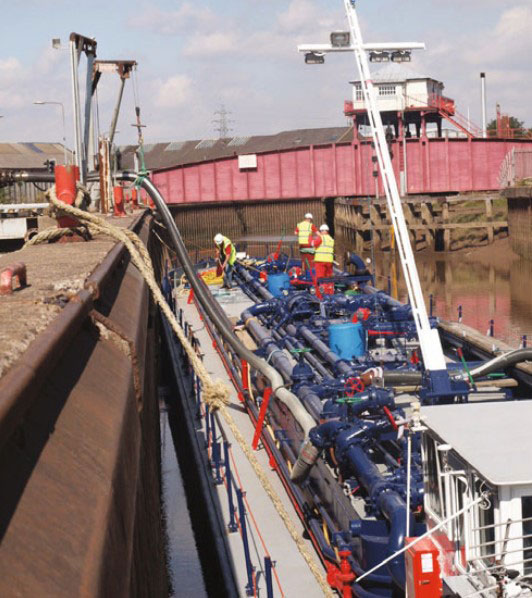
Source: Wise Global Training
All vessels are required to be registered under a flag state when they are first built, which means the owners of the vessel agree to comply with maritime regulations of the flag state.
During the initial registration process, the vessel is inspected by the flag state inspection team and, provided it meets the required standards, it will be issued with a number of certificates, each relating to various aspects of the vessel.
These certificates are renewed at various intervals on satisfactorily passing a re-inspection. Some certificates are renewable annually and some are renewable every 5 years with an intermediate inspection being conducted after 2½ years.
Owners can, and do, change the flag state of their vessels, and when this happens the vessel is re-inspected under the standards set by the regulations of the new flag state.
Roles and responsibilities of marine co-ordinators, masters and crew
Roles and responsibilities of masters and crew
On any seagoing vessel, the person responsible for the safety of the vessel and all those aboard is the master. The master has the absolute right – and duty – to make the final decision on matters affecting the vessel and those on board.
The size and structure of the crew will depend on a number of factors, including the size of the vessel, the type of cargo, the requirements of the owner, etc. All ships are issued with a minimum safe manning certificate. However, this is purely for getting a vessel from A to B and does not take into account such things as managing the cargo, maintenance, etc.
A typical crew list for a seagoing tanker is set out in Table 1 above.
Roles and responsibilities of marine co-ordinator
A marine co-ordinator can be based on board a Floating Production, Storage and Offloading (FPSO) unit or at a terminal.
The role involves being responsible for the co-ordination, testing and maintenance of all marine systems and equipment. He/she is also responsible for ensuring all marine activities, procedures and guidance are in compliance with current legislation, codes and standards. The marine co-ordinator will also lead on cargo transfer operations.
These include:
- The mooring of the vessels;
- The connecting and disconnecting of cargo hoses;
- The unmooring of the vessels;
- Co-ordinating the use of the support vessel.
He/she will also work with the crew of the ship (through the master) to ensure that the transfer of cargo and all other operations are carried out in a safe and efficient manner.
If the marine co-ordinator is based on board an FPSO unit, he/she might also oversee the day to day running of this type of vessel.
In summary, the marine co-ordinator is responsible for:
- Liaising between the ship’s crew and the asset;
- Planning, directing and co-ordinating the safe and efficient transfer of product between Liquefied Petroleum Gas (LPG)/oil tankers and the terminal or Floating Production, Storage and Offloading (FPSO) unit;
- Ensuring the safety of personnel and facilities;
- Applying timely and appropriate emergency measures when required to do so.
Personnel transfers and boarding arrangements
There are three primary methods of boarding a vessel. These are by:
- Gangway;
- Accommodation ladder;
- Pilot ladder.
We will now have a look at each of these boarding arrangements in a little more detail.
Gangway boarding
Boarding a vessel by gangway is the main and safest method of boarding a vessel. The gangway should have basic safety features such as handrails, nonslip treads and a suspended cargo net beneath the gangway. If the vessel is a tanker, the Emergency Shutdown (ESD) facility is also positioned adjacent to the gangway.
The gangway will always be manned by a watchman who will be in radio contact with the officer of the watch. The watchman’s duties include implementing security procedures as well as keeping and updating a Personnel On Board (POB) list. This is so that if an emergency situation arises, there is accurate knowledge of who needs to be accounted for.
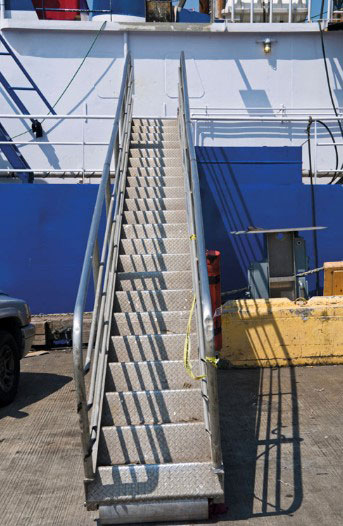
Source: iStock.
At the shore side of the gangway there will also be a fire plan so that, in case of emergency, shore responders can access a plan of the ship.
An accommodation ladder is an access ladder which is a permanent feature of the ship and is connected to the ship’s side. Its elevation can be adjusted according to the requirements of those wishing to board or leave the vessel. This could be at quay level or at sea level. If the ladder is used alongside a quay, a safety net should be rigged below the ladder. Adjustments to the elevation of the ladder are made by an on-board davit.
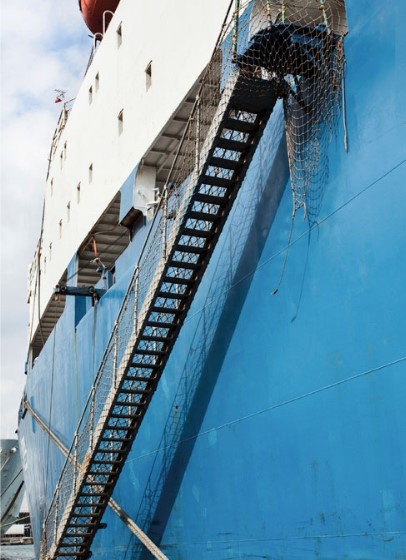
Source: iStock
As with the gangway, when accommodation ladders are used they should be manned at all times.
As its name suggests, a pilot ladder is for use by pilots to board and leave a ship. It should not be used by any other personnel for transferring between vessels, as it requires training and experience to undertake the transfer safely. If personnel need to board or leave a vessel from an attendant vessel, this should be done via the accommodation ladder.
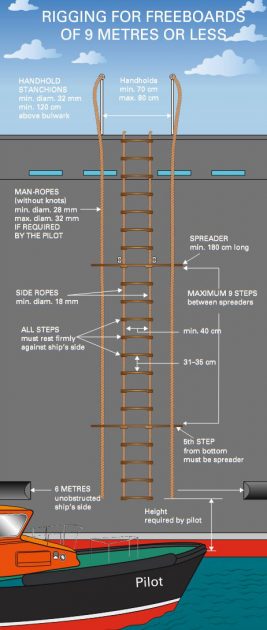
Source: International Maritime Pilots Association
The main hazard with this pilot ladder transfer is judging the swell of the sea whilst stepping from the ladder onto the other vessel. It also requires an experienced coxswain to ensure the pilot boat does not foul the ladder and cause undue strain which might lead to the pilot ladder being torn from its deck fixing points.
There are strict rules for the construction and use of these ladders. Figures 11, 12 and 13 are taken from a leaflet issued by the International Maritime Pilots’ Association.
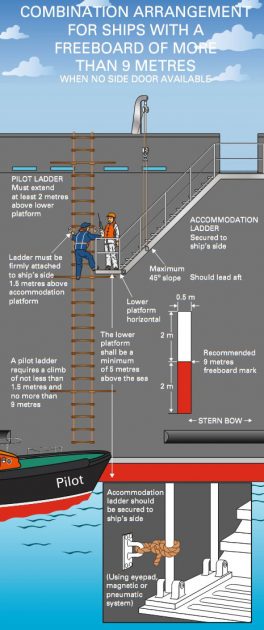
Source: International Maritime Pilots Association
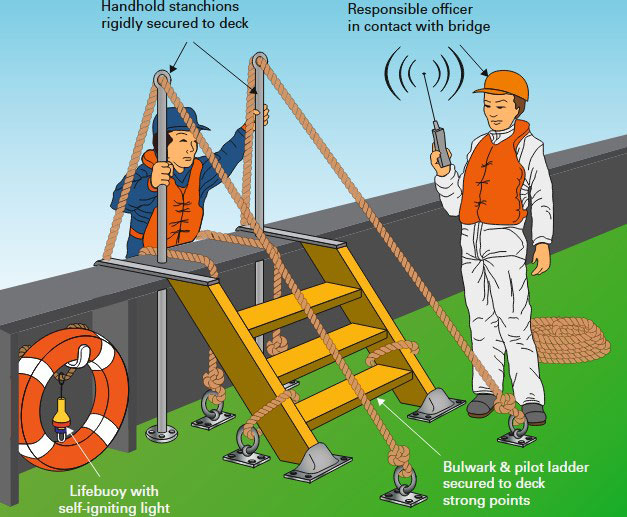
Source: International Maritime Pilots Association
Other types of personnel transfer
There are two other types of personnel transfer which are occasionally used.
The first is the basket transfer, sometimes known as Billy Pugh. This transfer method relies on the ability of the crane operator as well as the determination of the personnel to hold onto the netting.
Sometimes nicknamed “Billy Pugh” after its inventor, Captain Billy Pugh, this method of transfer is not internationally accepted, but is still used in some parts of the world. Basically, the basket is hoisted and lowered by a crane. The personnel being hoisted stand on the basket’s perimeter, lean in towards the net and hold tight before being lifted.
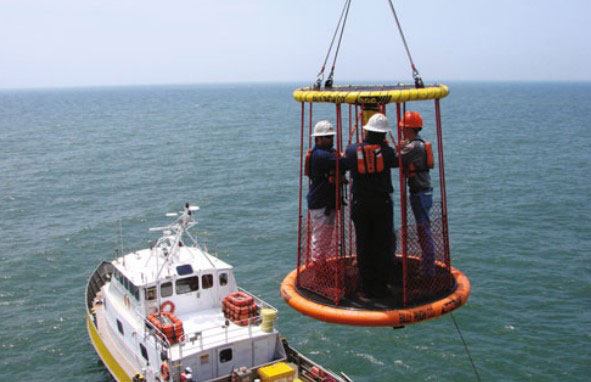
Source: Billy Pugh Co
The main risk with this type of transfer is of falling off, which can be controlled by holding tight and using some means of harnessing personnel to the device.
The second type of basket transfer is known as the “Frog”. Unlike the Billy Pugh, the people being transferred climb inside the frog and get strapped into it. It still requires a very experienced crane operator to ensure safe transfer of personnel. Figure 14 shows personnel being transferred by the Frog.
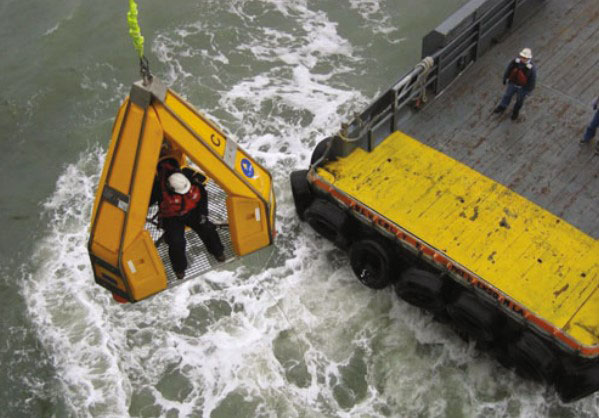
Source: Reflex Marine
Personal protective equipment suitability
The following section describes good practice for selecting protective clothing and other equipment for use in a marine environment.
Personal Protective Equipment (PPE) – specific requirements for marine use
- Lifejackets should be used when working over the side or on deck in heavy weather;
- Wet weather and/or cold weather clothing should be capable of providing adequate protection;
- Temperatures as low as -25 °C can be experienced and, when coupled with a wind chill factor, can present extreme conditions;
- Orinasal masks fitted with suitable filter cartridges should be used on liquefied petroleum gas/liquefied natural gas vessels;
- Emergency Life Support Apparatus (ELSA) should be installed at strategic places to aid escape from leaking gas on LPG/LNG carriers.
Personal Protective Equipment (PPE) – training
All personnel should be given adequate training in the use of PPE. Training should cover:
- How to properly put on PPE;
- How to remove contaminated PPE and how to minimize contamination before removal;
- How to dispose of contaminated PPE safely;
- The necessity of washing hands after taking off PPE;
- What to do with damaged PPE;
- Proper one time use of disposable PPE;
- Using the correct filters for each different type of gas;
- Keeping training records.
Diver operations
Diving project plan
Any diving operations will be undertaken by a diving contractor. Consequently, the diving contractor accepts full responsibility for carrying out a safe and efficient dive operation.
Once the extent of the work that requires diver operations to complete has been established and a risk assessment has been carried out covering the work, a diving project plan can be formulated.
The project plan will show how and to what extent the work will be split up into separate dive operations, it will show how the hazards identified in the risk assessment will be controlled, and it will include emergency and contingency plans.
Read also: Emergency Management and Methods of Handling Sudden or Unexpected Situations
A diving operation is the portion of a diving project identified in the diving project plan which can be supervised safely by one person. The diving contractor will appoint a supervisor to supervise each of these diving operations.
The supervisor has a duty to direct the diving operation safely. If a supervisor does not agree with the size or complexity of the diving project allocated to him/her to supervise, the supervisor has a duty to raise the matter with the diving contractor.
Diving contractor’s responsibilities
The diving contractor’s general responsibilities are to ensure that:
- The diving project is properly and safely managed;
- Risk assessments have been carried out;
- The place from which the diving is to be carried out is suitable and safe;
- A suitable diving project plan is prepared which includes emergency and contingency plans;
- The supervisor and dive team are fully briefed on the project and are aware of the contents of the diving project plan;
- There are sufficient personnel in the dive team to enable the diving project to be carried out safely;
- The personnel are qualified and competent;
- Supervisors are appointed in writing and the extent of their control fully documented;
- A suitable mobilization and familiarization programme is completed by all the members of the dive team. Other personnel involved in the diving project, for example ship’s crew, may also need to complete the programme;
- Adequate arrangements exist for first aid and medical treatment;
- Suitable and sufficient plant is provided and that it is correctly certified and maintained;
- The divers are medically fit to dive;
- Diving project records are kept containing the required details of the diving project;
- There is a clear reporting and responsibility structure laid down in writing.
Diving project – further control measures
Over and above the responsibilities of the diving contractor, there are other basic control measures which should be applied to all diving operations. These include:
- Any dive vessel must remain on station throughout the dive operation;
- Other subsea work may need to be suspended whilst divers are at work;
- All work being conducted above the divers (e. g. construction) should be suspended during the dive operation.
When a dive support vessel is working in close proximity to an installation, a copy of the diving project plan must be passed to the platform.

Source: Dreamstime
The dive operations are usually covered using the platform’s permit-to-work system, written platform procedures and method statements.
Questions and answers
Answer 1
The immediate area around an installation is regarded as a major risk area with potentially severe consequences for any incident that happens within it. Consequently, it is designated as an exclusion zone with restrictions on which vessels are allowed to enter the zone. The zone extends for 500 metres around the installation and is constantly radar-monitored, as well as being patrolled by the platform’s standby vessel or its emergency response and rescue vessel, either of which is in close communication with the platform’s central control room. Any vessel wishing to enter the exclusion zone must seek permission from the central control room and the patrol vessel before doing so. If a vessel tries to enter the zone without permission, it will be warned off by the patrol vessel.
Answer 2
- The vessel must be securely moored with sufficient mooring scope to ensure it does not range along or away from the berth. The mooring scope must also take into account tidal rise and fall, river currents and the possible effects of passing ships.
- Ensuring hoses are suitable for the product being discharged and the operating pressures they will be subjected to.
- Ensuring the connections of pipes and hoses to be used in the transfer operation are secure.
- Positioning drip trays beneath all connections and ensure there is close monitoring of connections during transfer operations.
- Deploying fire wires on the vessel to give tug boats a means of moving the vessel away from its berth quickly if an emergency arises.
- Reducing the risk of static electrical charges occurring on board ship by ensuring all metal objects are bonded to the ship.
- Due to the possible differences in electrical potential between the ship and the berth, there is a risk of electrical arcing at the manifold during connection and disconnection of the shore hose or loading arm. To protect against this risk, there should be a means of electrical isolation at the ship/shore interface.
- Fire control measures, such as fire-fighting equipment, should be made ready before transfer commences.
- Agreement should be reached between ship and shore on a discharge plan which ensures the vessel is not subject to undue internal stresses as the cargo is discharged.
- The control room should monitor flow rates and quantities. This includes alarm systems to indicate when tanks are nearing their filling point. There are also sensors indicating the trim of the marine vessel so that adjustments can be made to the ballast of the vessel as required.
- All doors and windows on board the vessel and in buildings at the terminal should be closed. This is to ensure there is no ingress of flammable vapour which might build up and potentially cause an explosion.
- Adequate venting arrangements should be in place to ensure vapour is dispersed properly and safely. This will include monitoring wind direction and strength.
- Venting arrangements should be made for both the recipient tank and the donor tank. The donor tank will require a volume of air, or more likely inert gas, to replace the volume of product transferred.
- Once discharge commences, the vessel must be kept within the operating envelope (limits) of the oil loading arms.
